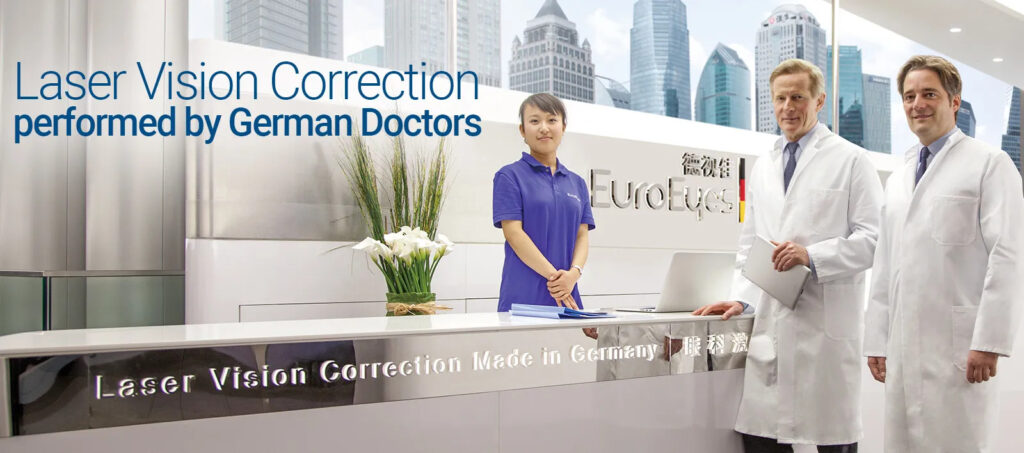Vision Aids to Help Glaucoma Patients
Are you or a loved one living with glaucoma? Struggling with changes in vision can be overwhelming, but there are vision aids available to help improve your quality of life. In this blog post, we will explore different types of vision aids specifically designed for individuals at various stages of glaucoma. From specialized glasses to low vision aids, we’ve got you covered! Let’s dive in and discover how these innovative tools can make a difference in your daily life.
What is Glaucoma?
Glaucoma is a group of eye conditions that damage the optic nerve, typically due to increased pressure within the eye. This damage can lead to vision loss and even blindness if left untreated. The most common type is open-angle glaucoma, where fluid buildup causes gradual pressure on the optic nerve.
On the other hand, angle-closure glaucoma occurs when the iris blocks drainage angles in the eye, causing a sudden increase in eye pressure. This acute condition requires immediate medical attention to prevent permanent vision loss.
While glaucoma often develops slowly and without noticeable symptoms in its early stages, regular eye exams are crucial for early detection and treatment. Understanding what glaucoma is and how it affects your eyes is essential for preserving your vision health over time.
Types of Glaucoma
Glaucoma is not a one-size-fits-all condition. There are different types of glaucoma, each with its own characteristics and treatment approaches.
One common type is open-angle glaucoma, which develops slowly over time and can often go unnoticed until advanced stages. Another type is angle-closure glaucoma, where the drainage angle of the eye becomes blocked suddenly, leading to a rapid increase in eye pressure.
Normal-tension glaucoma occurs when damage to the optic nerve happens despite normal eye pressure levels. Congenital glaucoma is present at birth and requires early detection and intervention.
It’s important to understand the specific type of glaucoma one has as it can impact the management plan recommended by healthcare professionals. Regular eye exams are crucial for early detection and treatment of any form of this sight-threatening condition.
Vision Aids for Early Stage Glaucoma
If you have been diagnosed with early-stage glaucoma, there are various vision aids that can help improve your quality of life and maintain independence. One common aid is the use of special eyeglasses designed to enhance contrast and reduce glare. These glasses can make it easier to see objects clearly and navigate your surroundings.
Another helpful tool for individuals with early-stage glaucoma is magnifying lenses or handheld magnifiers. These devices can assist in reading small print, viewing details up close, or even recognizing faces more easily. Additionally, using proper lighting sources such as adjustable lamps or daylight bulbs can also make a significant difference in improving visibility.
Furthermore, incorporating color contrasting techniques in your daily life – like using colored tape on stair edges or doorframes – can help distinguish different surfaces and prevent accidents due to poor depth perception caused by glaucoma. By utilizing these vision aids early on, you can adapt effectively to any changes in your eyesight and continue living comfortably.
Vision Aids for Advanced Glaucoma
For individuals with advanced glaucoma, vision aids play a crucial role in enhancing their quality of life. These aids are designed to compensate for significant vision loss and help patients navigate daily tasks with more ease and independence.
One common aid for advanced glaucoma is the use of magnifying devices. These tools can enlarge text, objects, or images, making them easier to see for those with reduced visual acuity. Magnifiers come in various forms such as handheld magnifying glasses or electronic magnification systems.
Another helpful tool is the use of high-contrast items. By using products with stark color contrasts like black and white, yellow and blue, or red and green, individuals with advanced glaucoma can distinguish objects more clearly.
Furthermore, specialized lighting solutions can also make a difference for those dealing with advanced glaucoma. Proper lighting can reduce glare and improve visibility, especially in dimly lit environments where shadows may cause difficulties in perception.
These vision aids cater to the specific needs of individuals facing advanced stages of glaucoma by offering practical solutions to enhance their visual experience on a day-to-day basis.
Specialized Glasses and Contact Lenses for Glaucoma Patients
Glaucoma patients often face challenges with their vision, but specialized glasses and contact lenses can offer significant help. These aids are designed to optimize visual acuity and enhance contrast sensitivity for individuals with glaucoma.
Specialized glasses can have tinted lenses to reduce glare and improve light sensitivity, making it easier for patients to see in different lighting conditions. Additionally, anti-reflective coatings on the lenses can minimize reflections that may disrupt vision.
Contact lenses specially made for glaucoma patients can provide a comfortable and convenient alternative to traditional eyeglasses. These lenses are custom-fitted to ensure proper alignment on the eye, optimizing visual correction while maintaining comfort throughout the day.
By incorporating specialized glasses or contact lenses into their daily routine, glaucoma patients can experience improved clarity of vision and enhanced quality of life. It’s essential for individuals with glaucoma to explore these options with their eye care provider to find the most suitable solution for their specific needs.
Low Vision Aids for Severe Glaucoma Patients
Living with severe glaucoma can be challenging, especially when it starts to impact your vision significantly. Low vision aids are essential tools that can help improve the quality of life for those dealing with advanced stages of glaucoma.
One common low vision aid for severe glaucoma patients is magnifiers. These devices come in various forms, such as handheld magnifying glasses or electronic magnifiers, and can help individuals read small print or see objects more clearly.
Another helpful tool is a video magnifier, which uses a camera to display enlarged images on a screen. This technology can be beneficial for tasks like reading books, writing, or viewing photos.
Telescopic lenses are also an option for enhancing distance vision in severe cases of glaucoma. These specialized lenses can make distant objects appear closer and clearer, aiding individuals in activities like watching TV or recognizing faces from a distance.
Low vision aids play a crucial role in empowering severe glaucoma patients to maintain their independence and continue engaging in daily activities they enjoy despite their visual challenges.
Other Assistive Devices for Glaucoma Patients
Glaucoma patients can benefit from various assistive devices beyond traditional vision aids. One innovative solution is the OrCam MyEye, a device that uses artificial intelligence to read text aloud and recognize faces. This can greatly enhance independence for those with glaucoma-related vision loss.
Another helpful tool is the IrisVision headset, which utilizes virtual reality technology to improve visual acuity and contrast sensitivity for individuals with advanced glaucoma. By enhancing their remaining vision, this device can significantly improve quality of life.
For those struggling with mobility due to glaucoma, electronic handheld magnifiers like the Ruby XL HD can be a game-changer. These portable devices offer adjustable magnification levels and high-contrast modes to help navigate surroundings more easily.
Furthermore, voice-controlled smart home devices such as Amazon Echo or Google Home can assist in daily tasks like setting reminders or accessing information hands-free. These tools provide convenience and accessibility for individuals experiencing vision challenges from glaucoma.
Conclusion
Vision aids play a crucial role in helping glaucoma patients maintain their quality of life and independence. From early-stage to advanced glaucoma, specialized glasses, contact lenses, low vision aids, and other assistive devices can make a significant difference in how patients navigate their daily activities. By understanding the different types of vision aids available and working closely with eye care professionals, individuals living with glaucoma can find the support they need to optimize their remaining vision and enhance their overall well-being. Remember that early detection and treatment are key in managing glaucoma effectively. If you or a loved one experience any symptoms of glaucoma, be sure to seek prompt medical attention for proper diagnosis and treatment.



